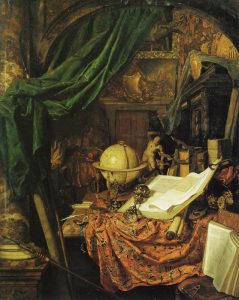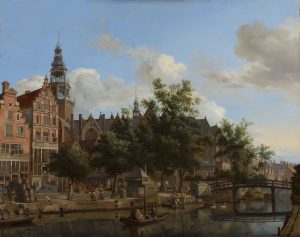 Medieval Urbanism and Geography
Medieval Urbanism and Geography
The medieval city in all its multitude of forms and guises has been a staple in contemporary myths, storytelling, and fairy tales, and has profoundly influenced fantasy RPGs. The instantly recognizable civic styles of Tolkien, the Forgotten Realms, and even the Witcher do after all draw their inspirations from places like as San Gimignano, Prague, and Carcassone.
To actually design intriguing imaginary medieval-esque settlements for your fantasy setting or campaign, that is to craft cities, towns, and villages that feel believable and are thus immersive, you will need some basic knowledge regarding life during the Middle Ages. You’ll need to realize that research and physical relics are readily available for your perusal. Re-interpreting the urban history of the period between the 8th and 15th century for your world should not rely on tired clichés and two dimensional towns obliged to sport a graveyard, a blacksmith, and a tavern.
Besides, studying the history of medieval urbanism is a wondrous source of inspiration and can influence not only the physical form of cities, but also the often exotic life of the NPCs inhabiting them. Here’s a recently revealed example: people in medieval Yorkshire were so scared of their dead they chopped and burned their skeletons to ensure they stayed in their graves.
Those were dark times indeed, and the earlier we look back the more dangerous and superstitious, too. Ancient bridges were seen as the “devil’s bridges” while infrastructure was left to crumble and allow mythical beasts to inhabit its ruins. Famine, disease, piracy, robbery, slave trading, and barbaric invasions terrorized the same lands pilgrims and merchants had to cross. Admittedly, barbarians did occasionally transform old amphitheaters into fortified settlements, too, though their main contribution was the destruction of the old Roman world with its theatres, agoras, and arenas.
During the Dark Ages, the collapse was slow but steady, and only after Charlemagne became King of the Franks did western and northern European space begin organizing itself anew. Life, sadly, remained crude and chaotic, and the need for protection was paramount. The cities that had survived, from Rome to Marseilles, began thriving again by satisfying said need, whereas the younger fortified towns, the burgs, were picking up population and eventually grew to protect their suburbs with new, bolder walls.
It wasn’t fear alone that powered medieval urbanism and the enriching of Europe’s predominantly rural geography. Thousands of new settlements of all shapes and sizes were supported by increased production and surpluses mostly derived from technological breakthroughs such as the heavy plow, the horse petal, and the waterwheel.
 An immensely varied system of urban environments and types of settlements arose while new regions such as Germany and Russia began their urbanization. Among the ten largest city populations of Europe around 1000, one would find Constantinople’s 500,000 inhabitants, Cordoba’s 450,000, and Rome’s 35,000. Four hundred years later cities with roughly 100,000 citizens were much more common and included Paris, Milan, and Prague. Furthermore, by the 12th century thousands of towns had been created as the complexity of medieval society kept rising.
An immensely varied system of urban environments and types of settlements arose while new regions such as Germany and Russia began their urbanization. Among the ten largest city populations of Europe around 1000, one would find Constantinople’s 500,000 inhabitants, Cordoba’s 450,000, and Rome’s 35,000. Four hundred years later cities with roughly 100,000 citizens were much more common and included Paris, Milan, and Prague. Furthermore, by the 12th century thousands of towns had been created as the complexity of medieval society kept rising.
A rich galaxy of urban places emerged. Craftsmen and salesmen gathered around castles and monasteries, and the cloth industry evolved. Former Roman settlements, major castles, fertile plains, river fords, natural ports, crossroads, and defensible positions all gave birth to unique towns and cities, though not exclusively so.
The rural medieval world, the era’s majority world, also got enriched. Europe was seeded with monasteries, donjons, castles, new bridges and their troll myths, palatinates, mottes, palaces, ports, and even wharfs. As for the average castle, it usually included its own donjon, dwellings, walls, and several outbuildings.
In the complex, hierarchical geography of the era cities were usually regional capitals, towns were the more common urban type, and the vast majority lived in villages and hamlets. Villages, as exemplified by Wharram Percy in England, were small settlements with mills and churches. Most of the houses, just like their urban counterparts, were based on wooden frames, though the use of brick, stone, and their combinations was common.
The contrast between the medieval rural and urban worlds was not merely a matter of size, but one of function. Cities, and to a lesser extent towns, were hugely different in economic and political organization when compared to their surrounding countryside.
They were walled, oriented around the consumption of rural supplies, based on trade and the production of specialized goods, and—though strongly linked to their hinterland and the feudal system—enjoyed partial and sometimes complete political autonomy. The great economic privilege of holding a regular market once a week, assembling for exchange neighboring peasants and craftsmen, depended upon both physical security and legal sanctuary; protection against theft and arbitrary tribute.
Their economic dynamism and self-defense capabilities also allowed cities to cater to the spiritual needs and increasingly refined tastes of the clergy and nobility. Yet, cities were not capitalist islands, and for the most part remained subordinate to agrarian regimes and the feudal economy. The church remained powerful within city walls, and strong traditions and a sense of common need guided urban life, even when the latter harbored secular thought, materialist ideas, literacy and combined such opposing forces into guilds and universities.
The lure of the city for the rural maverick—artist, freethinker, iconoclast, adventurer—was powerful, but so was the pull of rural values and modes of life. In medieval towns one could simultaneously find warriors, monks, merchants, bards, scholars, craftsmen, and priests. Possibly even alchemists or conjurers of demons.
Finally, and to bring this generalized approach to medieval urbanism to an end with some practical advice, do please keep in mind that each city was distinct, and that you should not be afraid to introduce civic variety in your fantasy world. Furthermore, researching urban history can reveal several gems, though some absolute basics have to be taken into account: Medieval cities were very small by today’s standards, they were dense settlements with narrow, unpaved streets—sometimes major streets and the market square were cobblestoned—and both cities and larger towns were always surrounded by walls.
TO BE CONTINUED…!


Very good article. This is always an area of interest. Looking forward to next installment.
This is a strong article. I am curious if you have knowledge about – or resources for – the urbanization of non-Western societies as well, much of which occurred far earlier than Western Europe’s revival. Medievalism is extremely common in ttrpg game settings, which bias toward a limited geographic realm and worldview for inspiration. Building societies based on, for example, the Ottoman Empire, Mesopotamia, the Yamato period of Japan (250-710) and more is an area rich for exploration and research. This is an area of gaming I believe passionately requires more mainstream attention and integration into our general worldbuilding and mindsets.
Thanks you for the solid analysis!